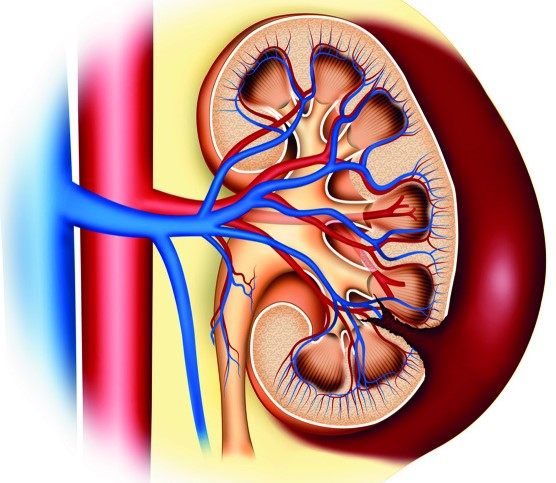Damage control for renal trauma: the more conservative the surgeon, better for the kidney
Abstract
Urologic trauma is frequently reported in patients with penetrating trauma. Currently, the computerized tomography and vascular approach through angiography/embolization are the standard approaches for renal trauma. However, the management of renal or urinary tract trauma in a patient with hemodynamic instability and criteria for emergency laparotomy, is a topic of discussion. This article presents the consensus of the Trauma and Emergency Surgery Group (CTE) from Cali, for the management of penetrating renal and urinary tract trauma through damage control surgery. Intrasurgical perirenal hematoma characteristics, such as if it is expanding or actively bleeding, can be a reference for deciding whether a conservative approach with subsequent radiological studies is possible. However, if there is evidence of severe kidney trauma, surgical exploration is mandatory and entails a high probability of requiring a nephrectomy. Urinary tract damage control should be conservative and deferred because this type of trauma does not represent a risk in acute trauma management.
Authors
Downloads
Keywords
- Renal Trauma
- Urinary Tract Trauma
- Damage Control Surgery
- Hematuria
- Urinary Bladder
- Kidney
- Nephrectomy
References
Viola TA. Closed Kidney Injury. Clin Sports Med 2013;32:219–27. https://doi.org/10.1016/j.csm.2012.12.002.
Sujenthiran A, Elshout PJ, Veskimae E, MacLennan S, Yuan Y, Serafetinidis E, et al. Is Nonoperative Management the Best First-line Option for High-grade Renal trauma? A Systematic Review. Eur Urol Focus 2019;5:290–300. https://doi.org/10.1016/j.euf.2017.04.011.
Veeratterapillay R, Fuge O, Haslam P, Harding C, Thorpe A. Renal trauma. J Clin Urol 2017;10:379–90. https://doi.org/10.1177/2051415817691642.
Gross JA, Lehnert BE, Linnau KF, Voelzke BB, Sandstrom CK. Imaging of Urinary System Trauma. Radiol Clin North Am 2015;53:773–88. https://doi.org/10.1016/j.rcl.2015.02.005.
Bittenbinder EN, Reed AB. Advances in renal intervention for trauma. Semin Vasc Surg 2013;26:165–9. https://doi.org/10.1053/j.semvascsurg.2014.06.012.
Heller MT, Schnor N. MDCT of renal trauma: Correlation to AAST organ injury scale. Clin Imaging 2014;38:410–7. https://doi.org/10.1016/j.clinimag.2014.02.001.
Shewakramani S, Reed KC. Genitourinary Trauma. Emerg Med Clin North Am 2011;29:501–18. https://doi.org/10.1016/j.emc.2011.04.009.
Keihani S, Xu Y, Presson AP, Hotaling JM, Nirula R, Piotrowski J, et al. Contemporary management of high-grade renal trauma: Results from the American Association for the Surgery of Trauma Genitourinary Trauma study. J Trauma Acute Care Surg 2018;84:418–25. https://doi.org/10.1097/TA.0000000000001796.
Javanmard B, Fallah-Karkan M, Razzaghi M, Ansari Djafari A, Ghiasy S, Lotfi B, et al. Characteristics of Traumatic Urogenital Injuries in Emergency Department; a 10-year Cross-sectional Study. Arch Acad Emerg Med 2019;7:e63.
Knudson MM, Harrison PB, Hoyt DB, Shatz D V., Zietlow SP, Bergstein JM, et al. Outcome after major renovascular injuries: A western trauma association multicenter report. J Trauma - Inj Infect Crit Care 2000;49:1116–22. https://doi.org/10.1097/00005373-200012000-00023.
Kansas BT, Eddy MJ, Mydlo JH, Uzzo RG. Incidence and management of penetrating renal trauma in patients with multiorgan injury: extended experience at an inner city trauma center. J Urol 2004;172:1355–60. https://doi.org/10.1097/01.ju.0000138532.40285.44.
Mingoli A, Torre M La, Migliori E, Cirillo B, Zambon M, Sapienza P, et al. Operative and nonoperative management for renal trauma: Comparison of outcomes. A systematic review and meta-analysis. Ther Clin Risk Manag 2017;13:1127–38. https://doi.org/10.2147/TCRM.S139194.
Kong JPL, Bultitude MF, Royce P, Gruen RL, Cato A, Corcoran NM. Lower urinary tract injuries following blunt trauma: a review of contemporary management. Rev Urol 2011;13:119–30. https://doi.org/10.3909/riu0521.
Pereira BMT, Ogilvie MP, Gomez-Rodriguez JC, Ryan ML, Peña D, Marttos AC, et al. A review of ureteral injuries after external trauma. Scand J Trauma Resusc Emerg Med 2010;18:1–11. https://doi.org/10.1186/1757-7241-18-6.
Coccolini F, Moore EE, Kluger Y, Biffl W, Leppaniemi A, Matsumura Y, et al. Kidney and uro-trauma: WSES-AAST guidelines. World J Emerg Surg 2019;14:1–25. https://doi.org/10.1186/s13017-019-0274-x.
Santucci RA, Bartley JM. Urologic trauma guidelines: A 21 st century update. Nat Rev Urol 2010;7:510–9. https://doi.org/10.1038/nrurol.2010.119.
Benz D, Balogh ZJ. Damage control surgery: Current state and future directions. Curr Opin Crit Care 2017;23:491–7. https://doi.org/10.1097/MCC.0000000000000465.
Kalkwarf KJ, Holcomb JB. Damage control resuscitation. Surg Crit Care Ther A Clin Oriented Pract Approach 2018;7:337–45. https://doi.org/10.1007/978-3-319-71712-8_32.
Becker A, Lin G, McKenney MG, Marttos A, Schulman CI. Is the FAST exam reliable in severely injured patients? Injury 2010;41:479–83. https://doi.org/10.1016/j.injury.2009.10.054.
Kirkpatrick AW, Sirois M, Ball CG, Laupland KB, Goldstein L, Hameed M, et al. The hand-held ultrasound examination for penetrating abdominal trauma. Am J Surg 2004;187:660–5. https://doi.org/10.1016/j.amjsurg.2004.02.003.
Kirkpatrick AW, Sirois M, Laupland KB, Liu D, Rowan K, Ball CG, et al. Hand-held thoracic sonography for detecting post-traumatic pneumothoraces: The extended focused assessment with sonography for trauma (EFAST). J Trauma - Inj Infect Crit Care 2004;57:288–95. https://doi.org/10.1097/01.TA.0000133565.88871.E4.
Jalli R, Kamalzadeh N, Lotfi M, Farahangiz S, Salehipour M. Accuracy of sonography in detection of renal injuries caused by blunt abdominal trauma:a prospective study. Ulus Travma ve Acil Cerrahi Derg 2009;15:23–7.
Bryk DJ, Zhao LC. Guideline of guidelines: A review of urological trauma guidelines. BJU Int 2016;117:226–34. https://doi.org/10.1111/bju.13040.
Morey AF, Brandes S, Dugi DD, Armstrong JH, Breyer BN, Broghammer JA, et al. Urotrauma: AUA guideline. J Urol 2014;192:327–35. https://doi.org/10.1016/j.juro.2014.05.004.
Manzano Nunez R, Naranjo MP, Foianini E, Ferrada P, Rincon E, García-Perdomo HA, et al. A meta-analysis of resuscitative endovascular balloon occlusion of the aorta (REBOA) or open aortic cross-clamping by resuscitative thoracotomy in non-compressible torso hemorrhage patients. World J Emerg Surg 2017;12:30. https://doi.org/10.1186/s13017-017-0142-5.
Moore EE, Cogbill TH, Jurkovich GJ, McAninch JW, Champion HR, Gennarelli TA, et al. Organ injury scaling. III: Chest wall, abdominal vascular, ureter, bladder, and urethra. J Trauma 1992;33:337–9. https://doi.org/10.1097/00005373-199209000-00001
Osborn LA, Brenner ML, Prater SJ, Moore LJ. Resuscitative endovascular balloon occlusion of the aorta: Current evidence. Open Access Emerg Med 2019;11:29–38. https://doi.org/10.2147/OAEM.S166087.
Al-Qudah HS, Santucci RA. Complications of renal trauma. Urol Clin North Am 2006;33:41–53. https://doi.org/10.1016/j.ucl.2005.10.005.
Starnes M, Demetriades D, Hadjizacharia P, Inaba K, Best C, Chan L. Complications following renal trauma. Arch Surg 2010;145:377–81. https://doi.org/10.1001/archsurg.2010.30.
Wright JL, Nathens AB, Rivara FP, Wessells H. Renal and extrarenal predictors of nephrectomy from the National Trauma Data Bank. J Urol 2006;175:970–5. https://doi.org/10.1016/S0022-5347(05)00347-2.
Hotaling JM, Sorensen MD, Smith TG, Rivara FP, Wessells H, Voelzke BB. Analysis of diagnostic angiography and angioembolization in the acute management of renal trauma using a national data set. J Urol 2011;185:1316–20. https://doi.org/10.1016/j.juro.2010.12.003.
Navsaria PH, Nicol AJ. Selective nonoperative management of kidney gunshot injuries. World J Surg 2009;33:553–7. https://doi.org/10.1007/s00268-008-9888-y.
Schellenberg M, Benjamin E, Piccinini A, Inaba K, Demetriades D. Selective nonoperative management of renal gunshot wounds. J Trauma Acute Care Surg 2019;87:1301–7. https://doi.org/10.1097/TA.0000000000002475.
Velmahos GC, Demetriades D, Cornwell EE, Belzberg H, Murray J, Asensio J, et al. Selective management of renal gunshot wounds. Br J Surg 1998;85:1121–4. https://doi.org/10.1046/j.1365-2168.1998.00798.x.
Cass AS, Luxenberg M, Gleich P, Hollander J, Smith C. Management of perirenal hematoma found during laparotomy in patient with multiple injuries. Urology 1985;26:546–9. https://doi.org/10.1016/0090-4295(85)90357-7.
Keihani S, Rogers DM, Putbrese BE, Moses RA, Zhang C, Presson AP, et al. A nomogram predicting the need for bleeding interventions after high-grade renal trauma: Results from the American Association for the Surgery of Trauma Multi-institutional Genito-Urinary Trauma Study (MiGUTS). J Trauma Acute Care Surg 2019;86:774–82. https://doi.org/10.1097/TA.0000000000002222.

Copyright (c) 2021 Universidad del Valle

This work is licensed under a Creative Commons Attribution-NonCommercial 4.0 International License.
The copy rights of the articles published in Colombia Médica belong to the Universidad del Valle. The contents of the articles that appear in the Journal are exclusively the responsibility of the authors and do not necessarily reflect the opinions of the Editorial Committee of the Journal. It is allowed to reproduce the material published in Colombia Médica without prior authorization for non-commercial use

 https://orcid.org/0000-0001-8187-0638
https://orcid.org/0000-0001-8187-0638


















